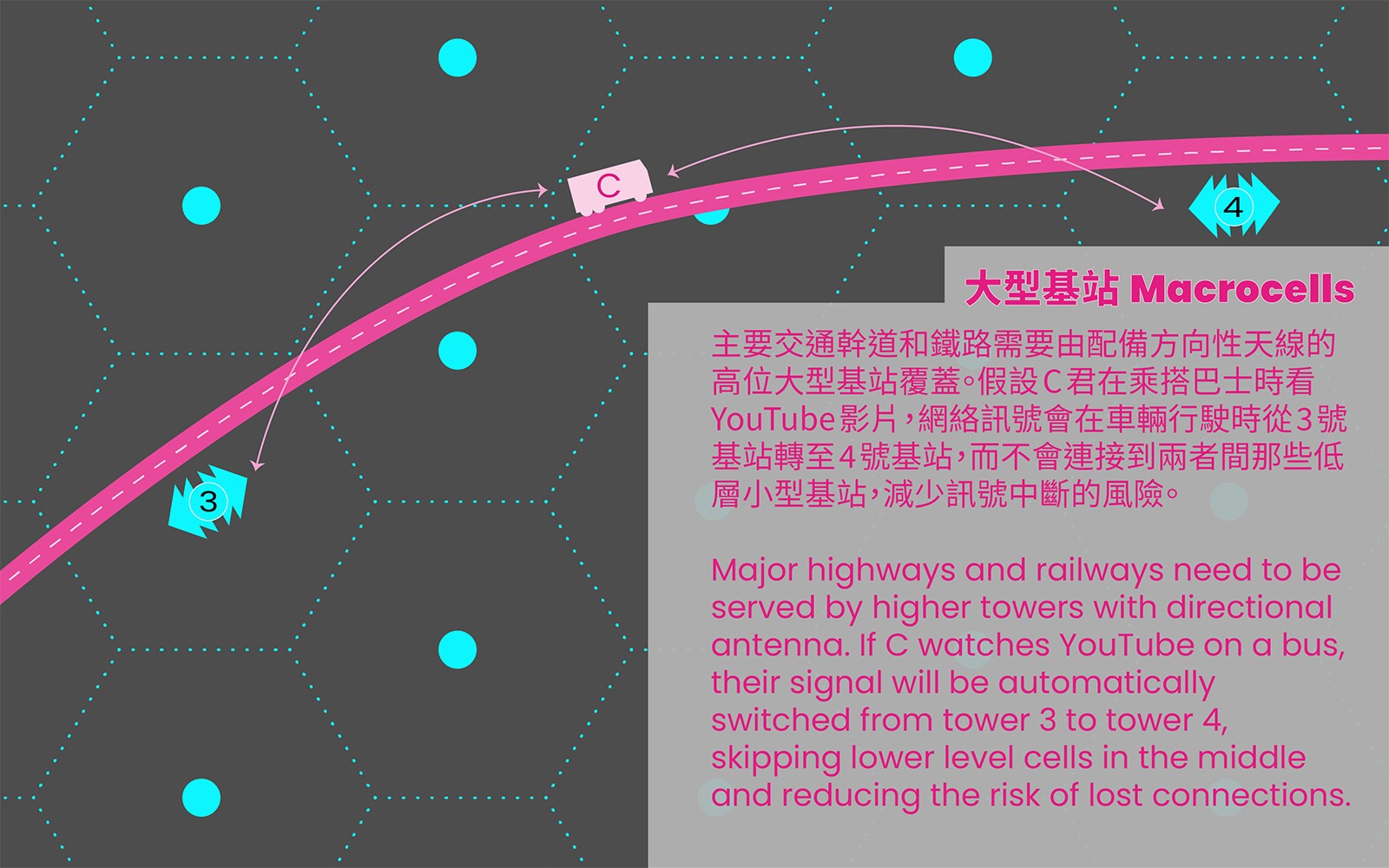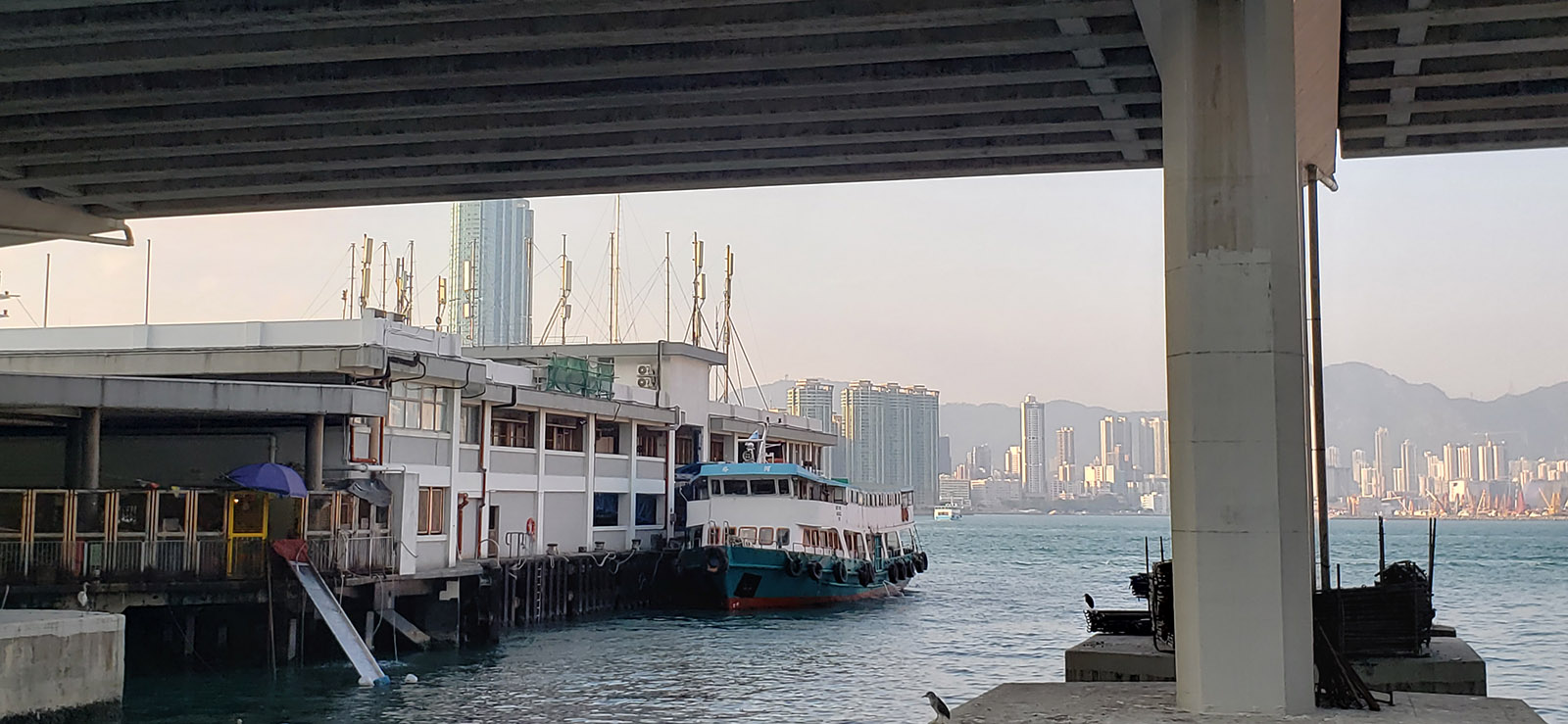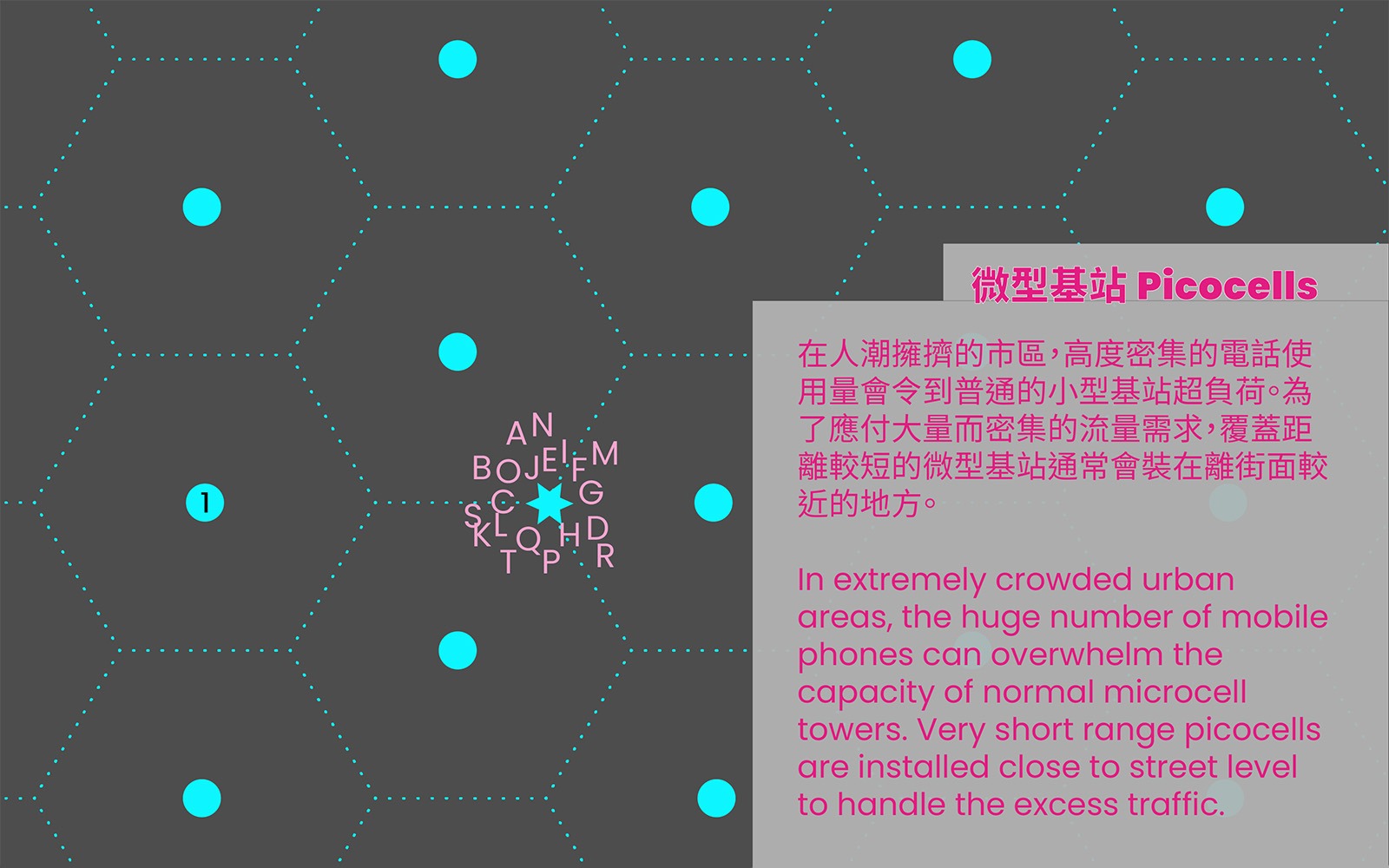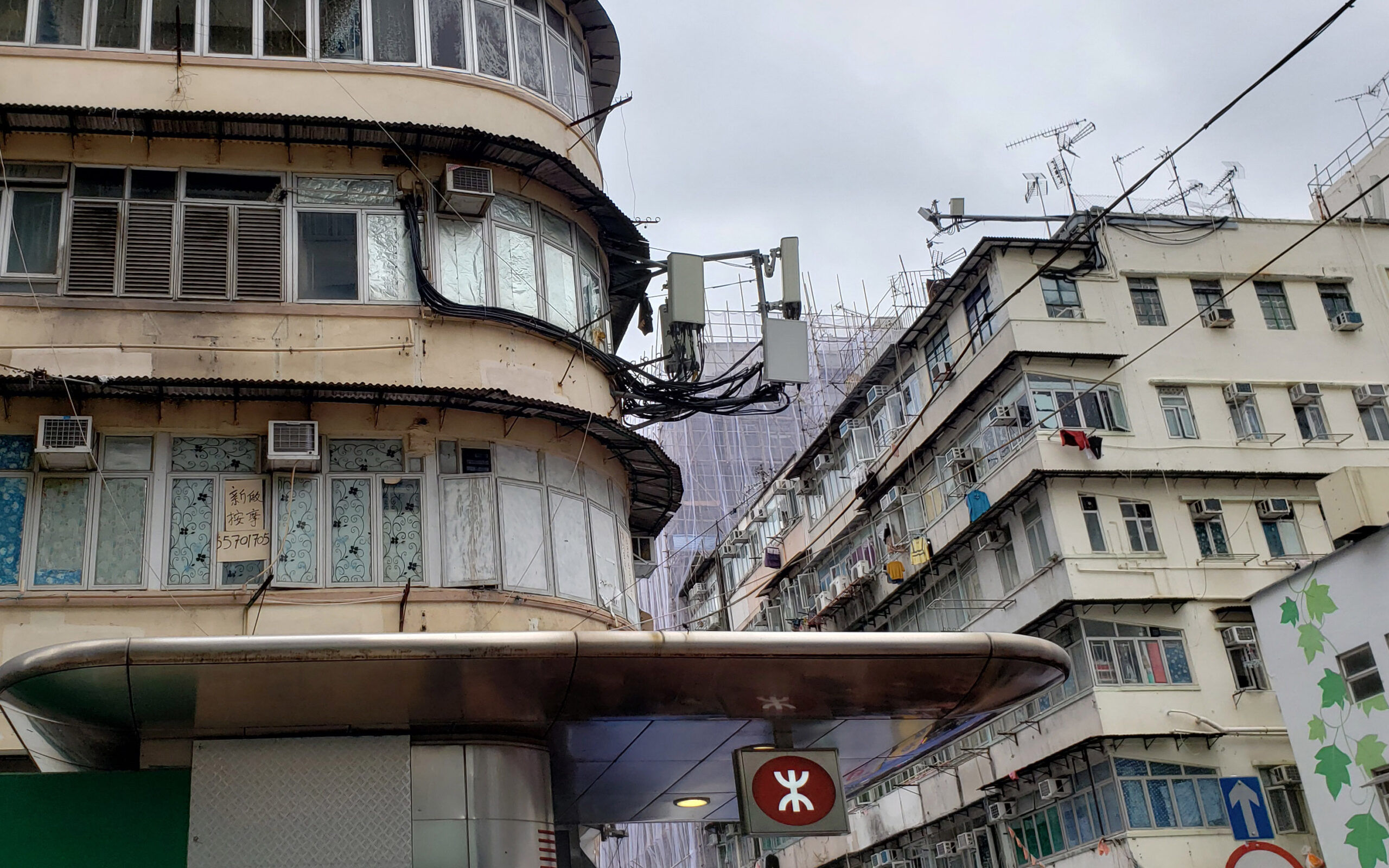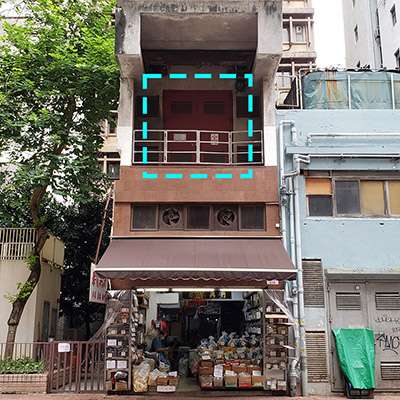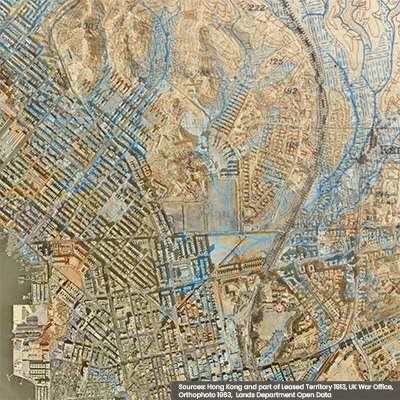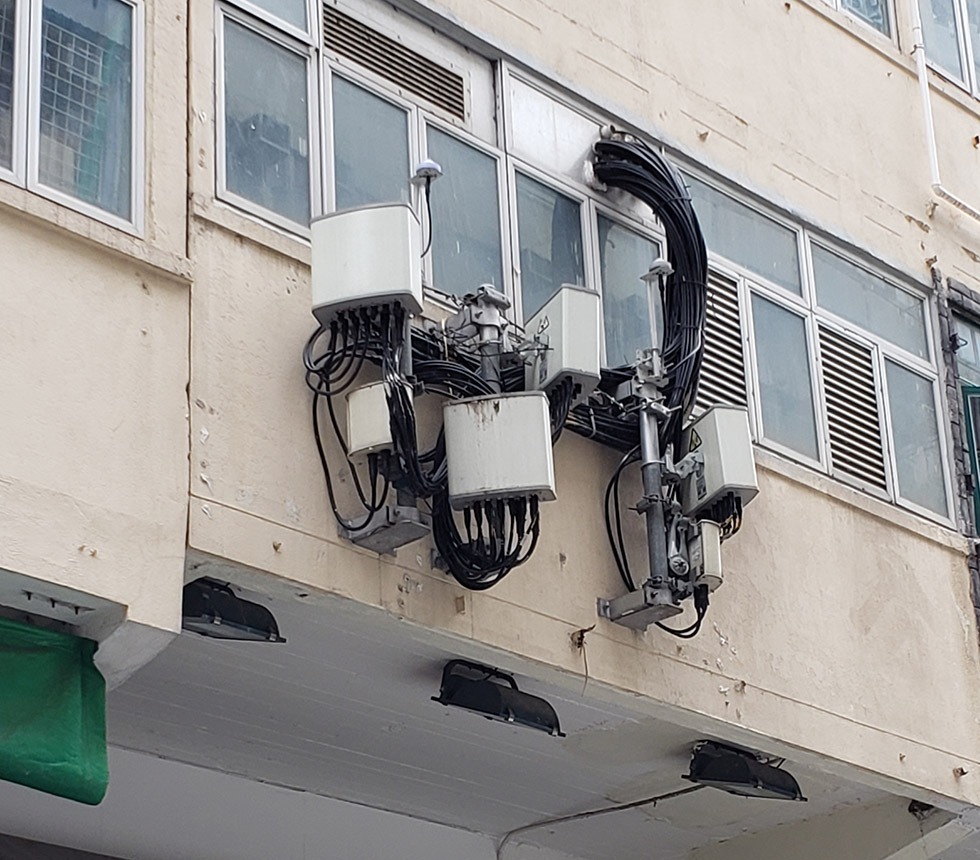

The Secret Cell Phone Antenna Next Door
Hong Kong has 3 mobile phones for every person. Here’s how that works.
If you look up while walking down the street, you may notice something unusual. This is a cell antenna. They are normally mounted on the podiums or roofs of high rise buildings, but what is one doing in the first floor window of a walk-up? To explain, we first need to briefly talk about bandwidth.
Unlimited data, limited bandwidth
Almost all radio, mobile data, and television signals are carried by radio waves on the electromagnetic spectrum. Lower subradio frequencies cannot carry much information, and higher microwave frequencies are limited to line-of-sight distances. Therefore, there is a fixed amount of radio bandwidth available, and the engineering challenge of the modern communications age has been to compress more data into narrower frequency bands without them interfering with each other. Each mobile antenna runs on its own frequency and has limited capacity, so providing service in a city as densely populated as Hong Kong, where there are an average of three mobile subscriptions per person, is a challenging task. Moreover, unless telecom companies have agreed to share facilities, each must set up its own separate infrastructure. This means there are cell phone antennae everywhere. If you learn where to look, you will find them.
The building blocks of the mobile network
There are basically three types of outdoor mobile antenna (this article does not deal with indoor ones e.g. in shopping malls). The first type is the microcell, which forms the basic basic building block of the mobile network. With a range of 180m to 900m, they are laid out in a roughly hexagonal pattern, with each coverage area forming a “cell” from which “cell phone” gets its name. Microcells are normally found on the roofs of tall buildings, aimed horizontally for maximum reach.
The second type is the macrocell, whose function is to serve people moving along major transport corridors at high speed. Movement is a challenge for a cell phone network. Normally your phone connects to the nearest antenna, and then when you move out of range, it switches to the next closest one. Every switch risks a dropped call. To minimize this, macrocells with long ranges (8-29 km) are placed at intervals along major roads and railways, aimed in the direction of traffic. Based on location and speed, they detect and connect to phones moving along these corridors, allowing them to skip over the microcells in the middle, and hopefully resulting in fewer dropped calls. Nevertheless, there are still some problematic spots, such as at Lai King along the Tsing Kwai Highway. Next time you are on a long bus ride, look out for clusters of cell phone towers aimed parallel to the road.
The third kind of antenna are picocells, which have a range of 200m or less. They provide supplementary capacity in extremely crowded areas, where the sheer volume of mobile traffic threatens to overwhelm the regular cellular network. Next time you are shopping in Mong Kok or Causeway Bay, look up. You will find some sticking out of windows with cables snaking into empty flats or shop units that house the routers and combiners, devices that convert mobile radio signals into electrical signals or vice versa. If lower locations are unavailable, picocells are installed on rooftops and angled sharply downwards towards the street. (For rooftop mobile towers, the equipment is housed in a metal cabinet the size of a portable toilet.)
So how can a phone company install picocells in the window of a tong lau? They rent the flat, or even buy it. Centaline Property transaction records show that a 295 square foot flat on the 2nd floor of the building above the Sham Shui Po MTR exit shown in the photo above was sold in 2017 for HK$2 million. It is not clear whether this was the same unit with the picocells, but provides a rough cost estimate. The density of users in some commercial areas is so extreme that it is worth the expense.
Hidden cell phone antennas
Ordinarily, little effort is made to hide mobile phone antennae. Hong Kong’s tall buildings and visually cluttered environment provide plenty of camouflage. However, in some cases, property owners wish to conceal them for aesthetic or fung shui reasons. In Admiralty, where the cityscape is dominated by smooth glass office towers, mobile antennae are tucked away in inconspicuous corners. There are several sets of antennae on the rooftop of the bus terminus of Queensway Plaza, a plain concrete structure that few people who walk through its air-conditioned corridors look at from the outside. One set of picocells is suspended from the ceiling of the Lippo Centre’s podium garden, where it cannot be easily seen from the street.
Telecom companies have gone to greater lengths to hide cell phone towers in low-rise cities overseas. It is common to see cell phone towers camouflaged as trees. Some cities even require it to assuage residents’ complaints about eyesores. But Ho-ming, a former telecommunications engineer, says that there used to be a picocell antenna disguised as a tree on the roof of Club One in Repulse Bay, one of the few locations in Hong Kong with many people but few tall buildings. Unfortunately, we were unable to obtain a photo of this tower.
However, there are other ways to hide cell antennas, even from the authorities. Mr. But added that while all outdoor cell towers are licensed by the Communications Authority, there are some unlicensed ones hidden away inside flats. “If you can see them, they are licensed,” he said. Unlicensed ones tend to be located in upscale residential areas such as the Mid Levels, where property owners are more likely to object to their appearance. If there is a flat in your building that no-one ever seems to go into out of, but which still consumes electricity, then it might just be a secret cell antenna. As for the vast majority of cell antennae that are hiding in plain sight, now that you know where to find them, you will never be able to unsee them.
Sources:
Special thanks to Mr. But Ho-ming.
Office of the Communications Authority, HKSAR Government, “Key statistics”, October 2023.
Communications Authority, HKSAR Government, “Telecommunications licenses”, December 2021.
Roman Mars and Kurt Kohlstedt, “The History of Fake-Tree Cellphone Towers”, Slate, 12 October 2020.
Centaline Property, “38E Kweilin Street–Transaction History”, 2017.



